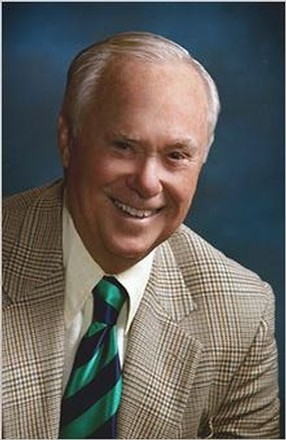Winemaker on the Loose | Kansas City
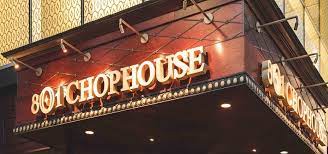
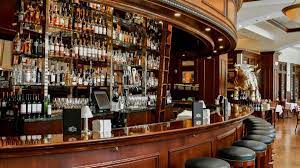

S54 E1 | Library Sessions
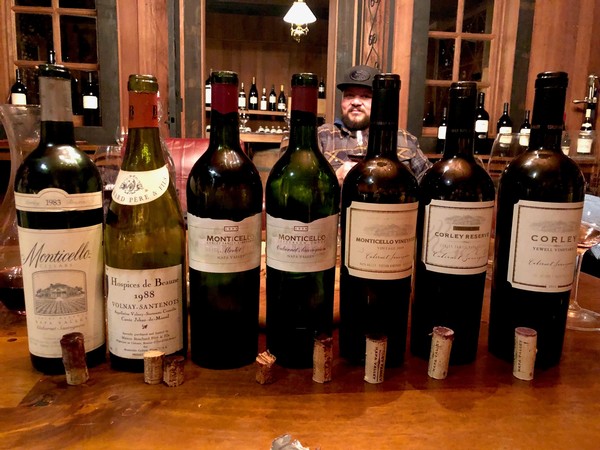
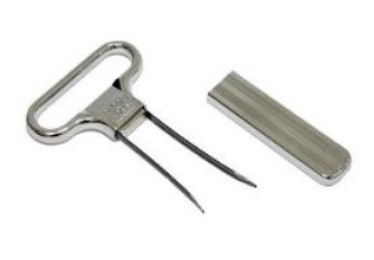
In Memoriam : Jay Corley, 1931-2016
MONTICELLO Founder and our Dear Ol' Dad, Jay Corley, passed away peacefully on January 11, 2016. We miss him, and remember him with admiration and love. We choose to celebrate his life rather than remain sad. He loved the wines of Burgundy, and that passion led him to the southern end of Napa Valley, where he founded MONTICELLO with original plantings of Pinot Noir and Chardonnay. In 2023, we'll be honoring our Founder and Dear Ol' Dad with very special limited-edition bottlings of Pinot Noir and Chardonnay. The following piece is from Jay's memorial, and helps share a little about our Dear Ol' Dad.
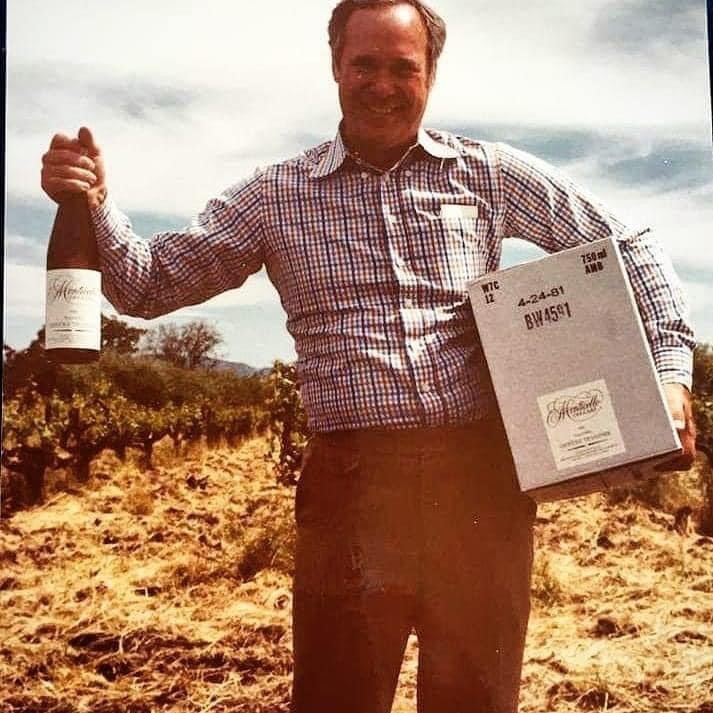
Jay was born on July 30, 1931 in Chicago, to John and Helen Corley. After graduating from Cranbrook high school in Detroit, Jay moved west to attend Arizona State and Stanford University. He later attended Pepperdine, where he received his MBA. His thesis was based on how to start a vineyard and winery business in the Napa Valley. Jay's interest in culture and languages also led him to serve as an Italian linguist with the NSA.
An entrepreneur at his core, Jay founded and managed a number of successful business ventures in Southern California in the 1960s. His family's long history of farming was always on his mind, and he felt himself drawn towards the reemerging wine regions in Northern California. When the post-prohibition reincarnation of Napa Valley's winegrowing industry began to germinate in the 1960s, Jay was quick to recognize the region's potential for growing world-class wine, and he made the decision to move north and follow his dream.
He established his vineyard in 1969 in the cooler southern end of the Napa Valley, now known as the Oak Knoll District. When he first surveyed his land, he stood in a tired and gnarly prune orchard peppered with black walnut trees, but what he saw was a world-class vineyard with the potential to make classic wines. In 1981, after more than a decade of growing and selling his grapes to other wineries, he built the winery at Monticello Vineyards and began to produce his own estate-grown wines. Jay took great pride that the winery he founded has entered into its second generation, with its third generation showing early interest in the family wine business.
Jay with daughter Carolyn Corley on her wedding day.
Jay nurtured a strong sense of civic duty, and served on several boards and foundations, including Queen of the Valley Hospital and Napa Valley Planning Commission. He served twice as Chairman of the Napa Valley Wine Auction, served on the Napa Valley Grand Jury, and was longtime and active member of Napa Rotary. He enjoyed his affiliations with the Chevalier du Tastevin, and with his fellow GONADS (The Gastronomical Order for Nonsensical and Dissipatory Society), a group of fun-loving yet dedicated friends and fellow Napa Valley wine industry pioneers.
Jay was a life-long and devoted Chicago Cubs fan, rooting for his beloved Cubbies since he was a kid at Wrigley Field in the 1930s. Jay also cheered for the Stanford Cardinal, and loved to spend weekends tailgating at the eucalyptus grove at Stanford stadium, and cheering on his alma mater from the old wooden benches.
He had a wonderful sense of humor, and would light up a room with his smile and wit. His love of swing music lifted the spirits, and was frequently playing in the background. He was a well-traveled man, familiar with international cultures, yet was most comfortable at home with family.
Nothing in the world can take the place of Persistence. Talent will not; nothing is more common than unsuccessful men with talent. Genius will not; unrewarded genius is almost a proverb. Education will not; the world is full of educated derelicts. Persistence and determination alone are omnipotent. The slogan 'Press On' has solved and always will solve the problems of the human race.
- Calvin Coolidge
MONTICELLO 'Corley Reserve' | Proprietary Red Wine
A great pleasure of estate winegrowing is to see how our wines develop over time, sometimes very long periods of time. We’ve been farming our estate vineyards for more than 50 years … in fact we’re one of the few fifty plus year old, family owned, estate grown wineries remaining in Napa Valley. We tend to develop personal relationships with our wines and vineyard blocks.
One of my favorite wines to blend is our MONTICELLO ‘Corley Reserve’ Proprietary Red Wine. I love the freedom this wine allows me during the creative flow of the blending process. Since this wine is labeled simply as red wine, I’m free to follow my palate through all of the barrels in our cellar when assembling this blend each year. Ever since the first vintage in 1999, this wine has typically been composed of Cabernet Franc, Merlot and Cabernet Sauvignon, although there have been a few vintages over the last 24 years, that I’ve unconventionally blended in some Syrah.
Most of the blends have been led by Cabernet Franc, which is such a magnificent grape when grown with love. We grow four different selections of Cabernet Franc on two estate ranches in the Oak Knoll District of Napa Valley Each selection has a different nuance of the varietal, and all of them represent it wonderfully.
In general, these bold red blends hit a wonderful sweet spot on the palate at 10-15 years. With about an hour of decanting, the tannins are as smooth as silk, the fruit is awakened from its bottled slumber, and the finish just keeps going and going. I’ve been enjoying our MONTICELLO 'Corley Reserve' Proprietary Red Wine 2006 and Proprietary Red Wine 2007 over the last couple of years, and as we enter 2023, I’m looking forward to enjoying and featuring our 2008 as a fifteen year library selection!
The 2008 growing season was a little bit of a roller coaster, but It ended up being an exceptional year for quality. Drought preceded a hard frost, which led to an uneven set and a small crop. Then heat spikes hit as harvest began. But after that it was smooth sailing, resulting in wines of very good to exceptional quality. Given all the climatic challenges, our only disappointed was the low tonnage in several vineyards.
Our MONTICELLO ‘Corley Reserve’ Proprietary Red Wine 2008 is a blend of 44% Cabernet Franc, 38% Merlot and 18% Cabernet Sauvignon. I just enjoyed a bottle of this with Christmas Dinner and it was absolutely terrific. Smooth supple tannins, beautiful aromas of plum, black cherry and tertiary aromas of cinnamon, potpourri and chocolate. The transitions across the palate are seamless, and the finish just sails on and on. The light beam of acidity on the midpalate (a telltale from our cooler southern Oak Knoll District vineyards) has kept the wine vibrant and alive at fifteen years, especially with the softer tannins.
We’ll be celebrating this wine all through 2023 as a fifteen year library selection. As we close out 2022, I’m excited to offer it together in a three-bottle bundle with our 2006 & 2007, so you can experience and enjoy the same multi-vintage transitions that I have for the last few years. And we’ll send it to you in a sharp three-bottle gift box!
If you’re intrigued, please CLICK HERE … enter coupon code BOXDAY, and you’ll receive 20.22% savings and we’ll ship the order to you for a MONTICELLO Nickel ($0.05 flat rate special).
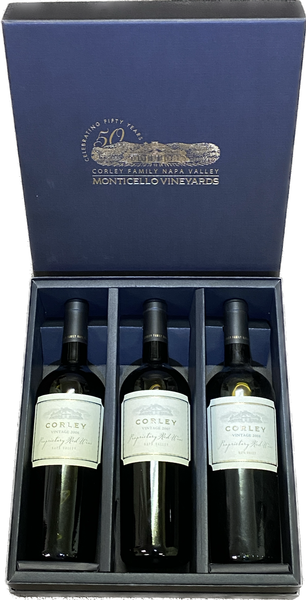

Remembering Dear Ol' Dad | Jay Corley, 1931-2016
Jay was born on July 30, 1931 in Chicago, to John and Helen Corley. After graduating from Cranbrook high school in Detroit, Jay moved west to attend Arizona State and Stanford University. He later attended Pepperdine, where he received his MBA. His thesis was based on how to start a vineyard and winery business in the Napa Valley. Jay's interest in culture and languages also led him to serve as an Italian linguist with the NSA.
An entrepreneur at his core, Jay founded and managed a number of successful business ventures in Southern California in the 1960s. His family's long history of farming was always on his mind, and he felt himself drawn towards the reemerging wine regions in Northern California. When the post-prohibition reincarnation of Napa Valley's winegrowing industry began to germinate in the 1960s, Jay was quick to recognize the region's potential for growing world-class wine, and he made the decision to move north and follow his dream.
He established his vineyard in 1969 in the cooler southern end of the Napa Valley, now known as the Oak Knoll District. When he first surveyed his land, he stood in a tired and gnarly prune orchard peppered with black walnut trees, but what he saw was a world-class vineyard with the potential to make classic wines. In 1981, after more than a decade of growing and selling his grapes to other wineries, he built the winery at Monticello Vineyards and began to produce his own estate-grown wines. Jay took great pride that the winery he founded has entered into its second generation, with its third generation showing early interest in the family wine business.

Jay nurtured a strong sense of civic duty, and served on several boards and foundations, including Queen of the Valley Hospital and Napa Valley Planning Commission. He served twice as Chairman of the Napa Valley Wine Auction, served on the Napa Valley Grand Jury, and was longtime and active member of Napa Rotary. He enjoyed his affiliations with the Chevalier du Tastevin, and with his fellow GONADS (The Gastronomical Order for Nonsensical and Dissipatory Society), a group of fun-loving yet dedicated friends and fellow Napa Valley wine industry pioneers.
Jay was a life-long and devoted Chicago Cubs fan, rooting for his beloved Cubbies since he was a kid at Wrigley Field in the 1930s. Jay also cheered for the Stanford Cardinal, and loved to spend weekends tailgating at the eucalyptus grove at Stanford stadium, and cheering on his alma mater from the old wooden benches.
He had a wonderful sense of humor, and would light up a room with his smile and wit. His love of swing music lifted the spirits, and was frequently playing in the background. He was a well-traveled man, familiar with international cultures, yet was most comfortable at home with family.
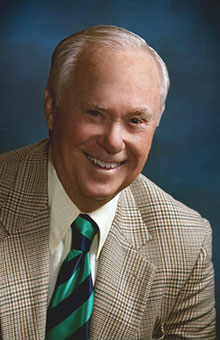
PRESS ON!
Nothing in the world can take the place of Persistence. Talent will not; nothing is more common than unsuccessful men with talent. Genius will not; unrewarded genius is almost a proverb. Education will not; the world is full of educated derelicts. Persistence and determination alone are omnipotent. The slogan 'Press On' has solved and always will solve the problems of the human race.
- Calvin Coolidge
Founders Month | Happy Birthday Pop!
We're winding up Founder's Month here at the winery, and there is no better way to celebrate it than on our dad's birthday. Jay Corley was born on July 30, 1931, and today is his 90th birthday!
Happy Birthday Pop!
Of all of his interests, Jay was most driven by his love of Burgundian wines, which is what originally enticed him to Napa Valley in the late 1960s to establish our family winery in the Oak Knoll District. He had many other interests as well, and had a particular penchant for combining his interests with business. In business, he was a deeply strategic thinker; although on a personal level, he was a pretty straightforward guy, generally valuing simplicity over complexity. He had some simple pleasures in life, one in particular was enjoying a bowl of fresh popcorn.
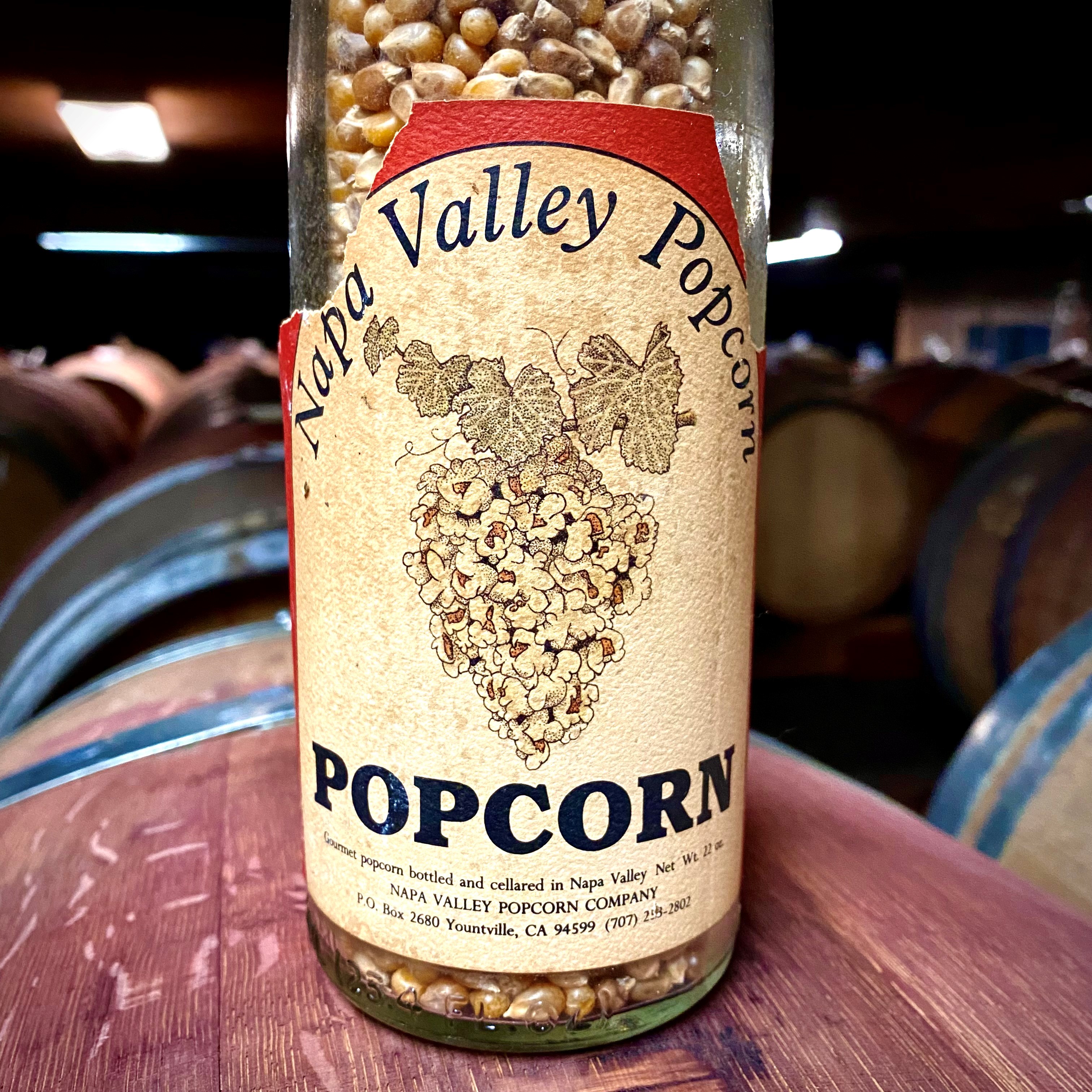
With a strong business gene in his DNA, it was inevitable that Jay's enjoyment of popcorn would eventually manifest itself into some sort of business, and in the 1980s, the Napa Valley Popcorn Company was born. He procured gourmet kernels, and packaged them very elegantly in a flint burgundy bottle (of course, a burgundy bottle!). Capped with a gold capsule, and an image of a fully 'ripened' cluster of popcorn, these bottles were great additions to family movie night! Napa Valley Popcorn Company was based out of his old office at Vintage 1870, and I remember the popcorn bottle sitting on his desk for years as a kid. We would go with him to work plenty of times, and I spent a lot of time roaming around there, visiting the Connecticut Yankee, the toy store, having lunch at the Chutney Kitchen (now Bottega is in that space).
Even as a kid, I always admired how our dad seemed to find enjoyment in the things that he did and pursued. When I got older, I started to realize that he wasn't finding enjoyment, he was making it happen. That made me admire him even more.
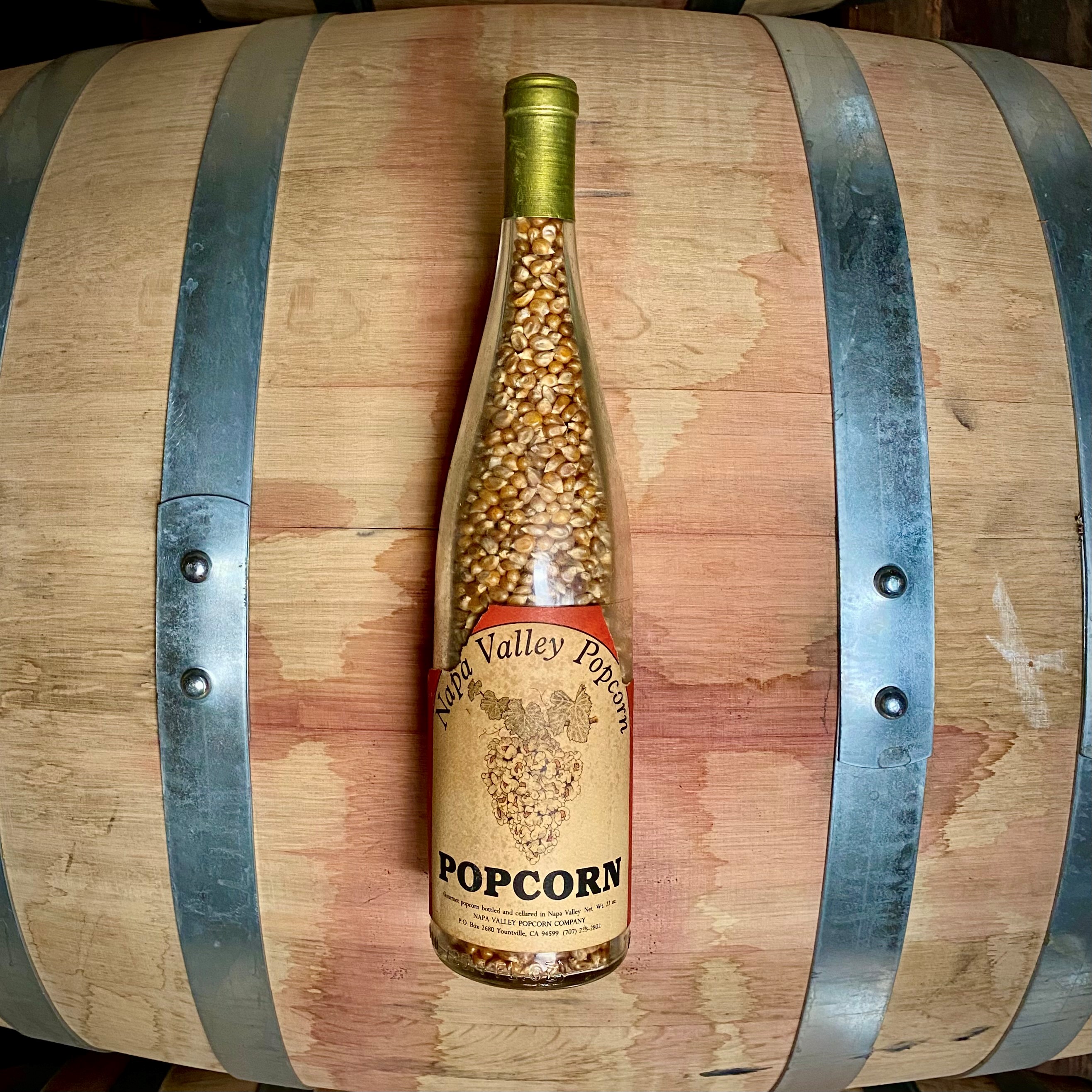
Those bottles of popcorn always tasted better to me because I knew who stood behind them, and I believe the same can be said for our wines. Popcorn and wine might seem like an unusual pairing, but the further I make my way through life, the more firmly I believe that its the 'unusual pairings', and the people that identify them, that actually make life interesting!
Today is our Pop's birthday, and to celebrate, we bought a classic popcorn cart to keep at the winery. We'll start serving up some complimentary popcorn on special occasions for our guests in celebration and honor of our Founder and Dear Ol' Dad.
Happy Birthday Pop!
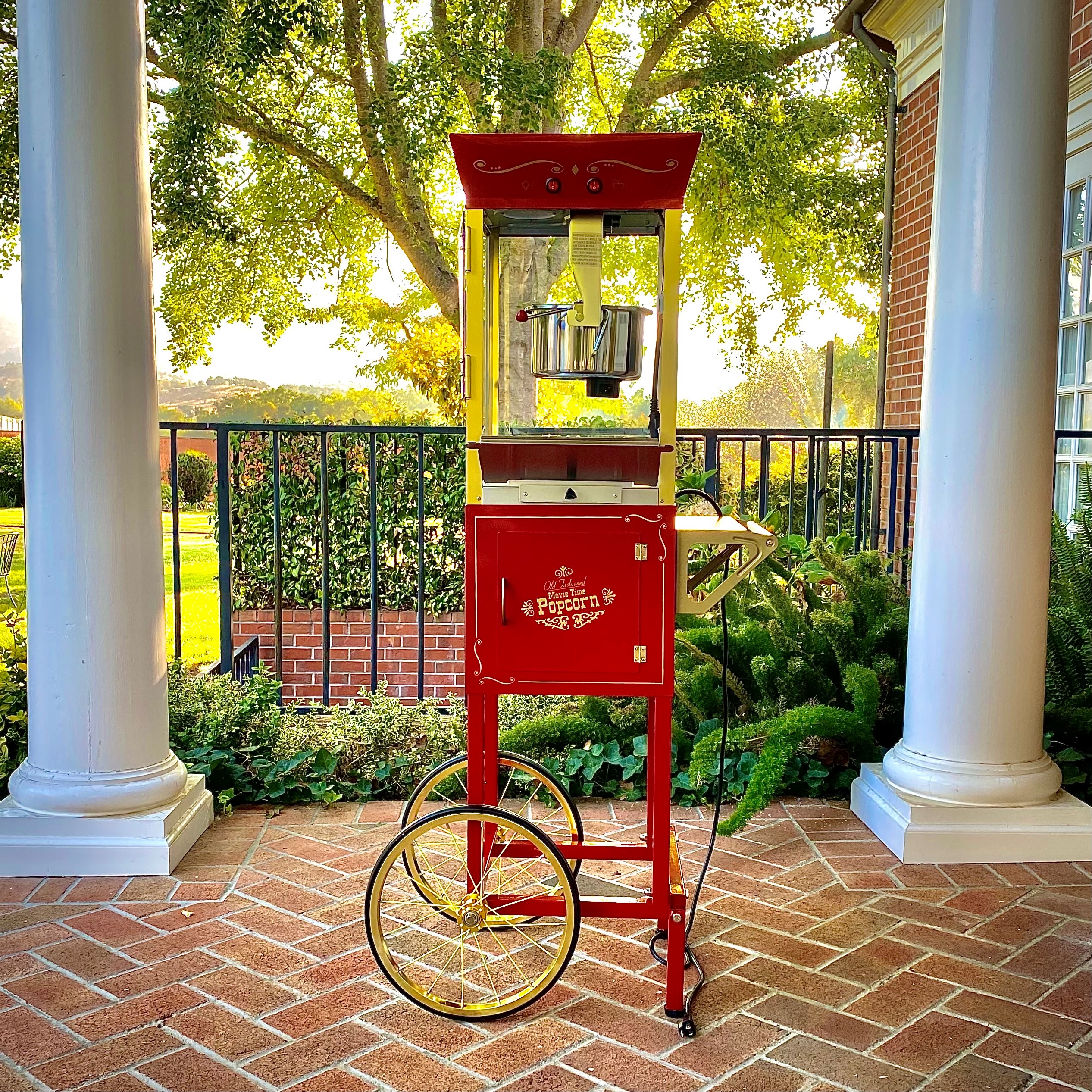
Founder's Month | Library Selection | CORLEY Magnums 'Vintage 2014'
As we celebrate Founder's Month this July, we're pulling some wonderful wines from the library. Tasting back through these older wines truly reflects our long-thinking commitments to our stewardship of the land that our Founder Jay Corley started more than 50 years ago. These library selections were specifically made to improve over time, and to age gracefully for +20 years.
This week, we're focusing on the 2014 vintage, specifically our CORLEY selections bottled in magnums. Here is some additional information on this terrific vintage, including vintage commentary, general tasting notes, and some thoughts about aging wine in magnums.
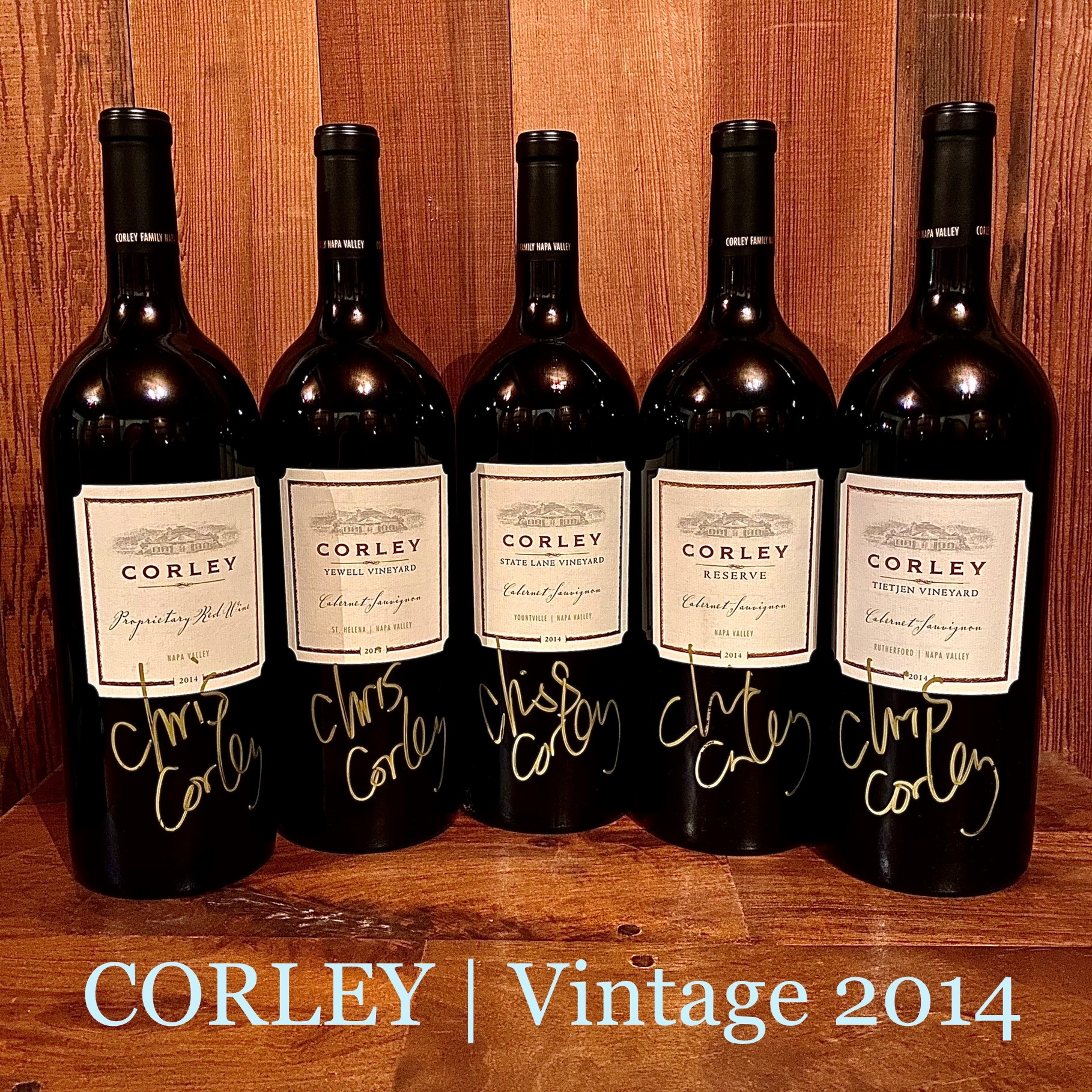
VINTAGE 2014 NOTES : The 2013/2014 winter was one of the driest on record in California and rainfall totals in the Napa Valley were approximately half of normal. However, the timing could not have been better : heavy rains in late February and early March gave a much-needed drink of water to the vines as they were emerging from dormancy and about to begin bud break. Furthermore, the spring was warm allowing vintners and growers to save water if needed for irrigation rather than using it for frost protection. And finally, while the vines used for high-quality wine production generally don’t need much water, a benefit of the drought is that berry sizes are typically smaller and have more concentrated flavors, which contributed to the overall quality of this year’s harvest. As it relates to Cabernet Sauvignon and Bordeaux-inspired blends, our wines from 2014 are some of the best of the last decade, deep in complexity, texture, flavor and aroma. In general, the wines have an appropriate balance of tannin which allows them to be approachable in their youth, but will enable them to age gracefully for 20+ years.
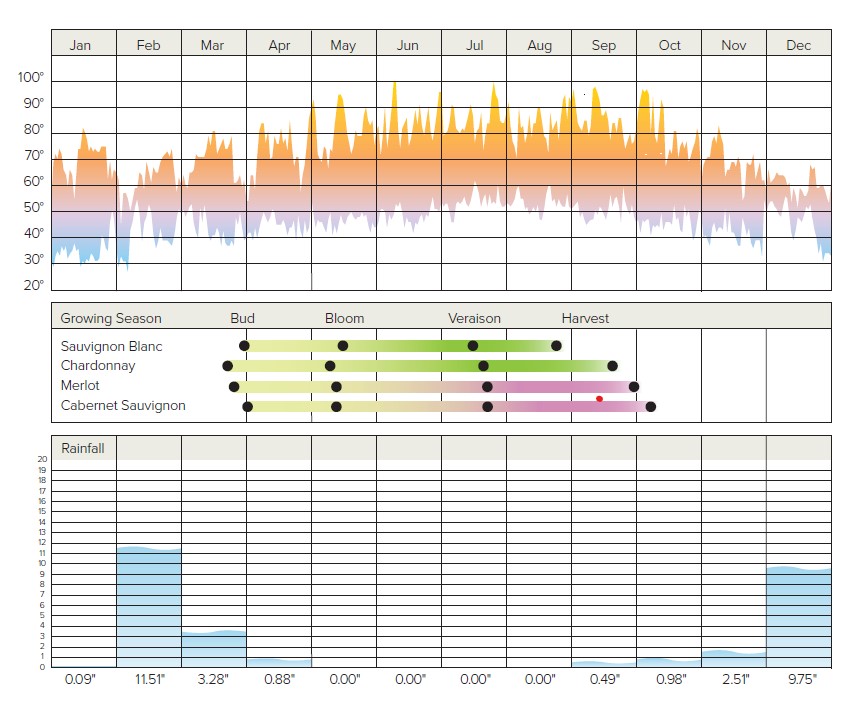
The Napa earthquake on August 24 was an exciting prelude for the vintage! While it created a lot of cleanup work for us leading into the harvest, it had no direct impact on the quality of the wines from 2014. This picture is the actual barrel room where we stored our barrels in 2014. Our barrels are not in this picture, we were fortunate to have had our barrels stored next to the wall on the north end of the building ... when the earthquake struck, most of our barrels were prevented from falling by the northern walls.
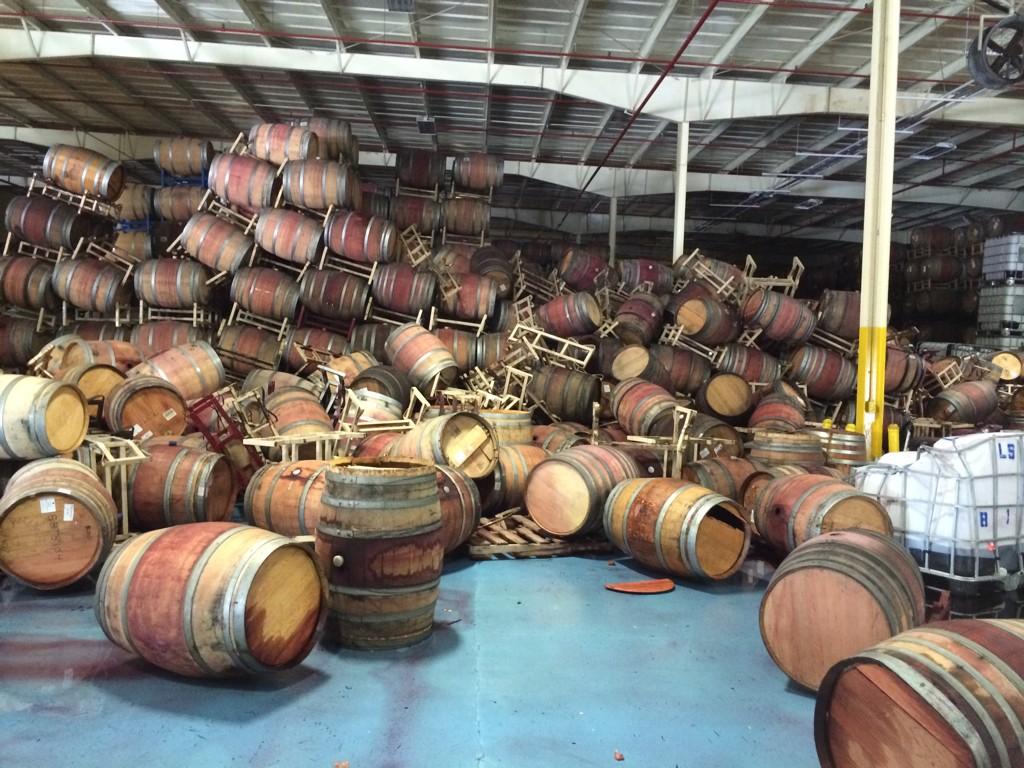
In upcoming posts, we're excited to share some more details about specific wines from the terrific 2014 vintage. In the meantime, for more information on availability of any of these special wines, please visit CORLEY Library Wines | Vintage 2014.
Founder's Month | Library Selection : CORLEY Cabernet Sauvignon 'Reserve' 1999
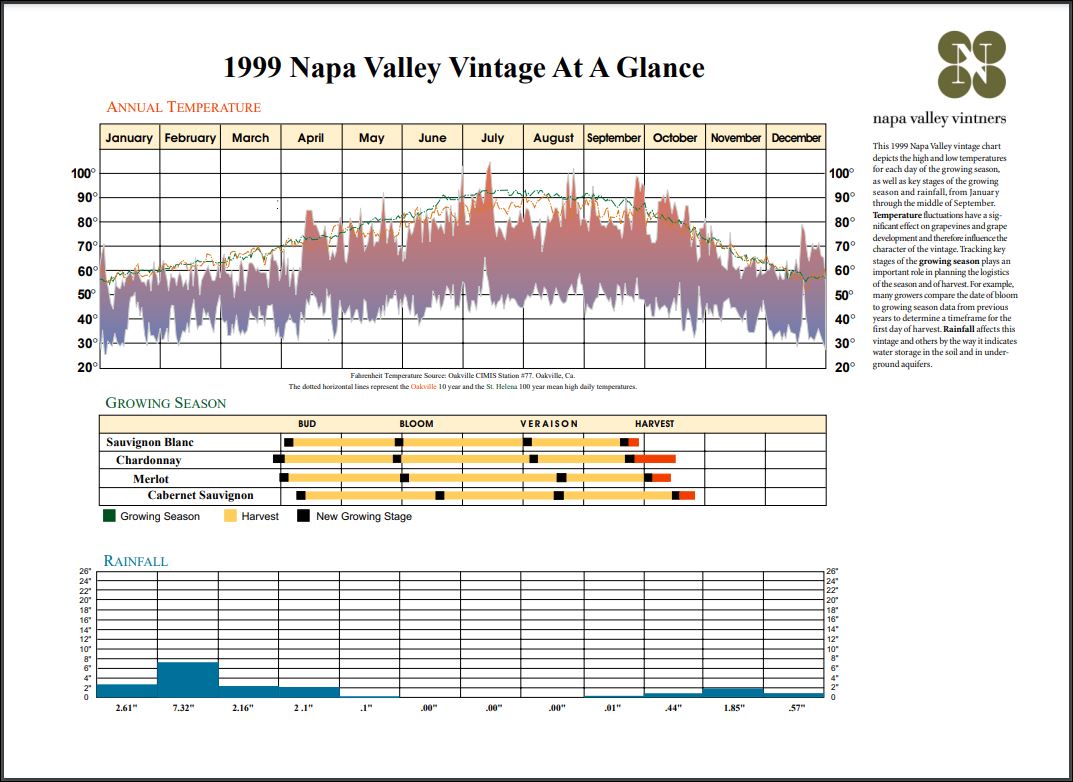
Founder's Month | Jay Corley
CORLEY | Cabernet Sauvignon 'Reserve' 1999
When our dad first set eyes on our property in the late 1960s, he saw a dusty old prune orchard, with a tall stand of black walnut trees in the back down by the river. He was 39 years old. He was 39 my whole life ... '39 and holding' he used to say! Where many might have simply seen a dried up old orchard, he envisioned an opportunity for a world class vineyard. He loved the wines from Burgundy, and settling into the southern end of the Napa Valley made a lot of sense for a guy that wanted to grow the best Chardonnay and Pinot Noir he could in California. Carneros and the Coastal regions hadn't really established themselves yet in the late 1960s, so he landed in what is now the Oak Knoll District of Napa Valley.
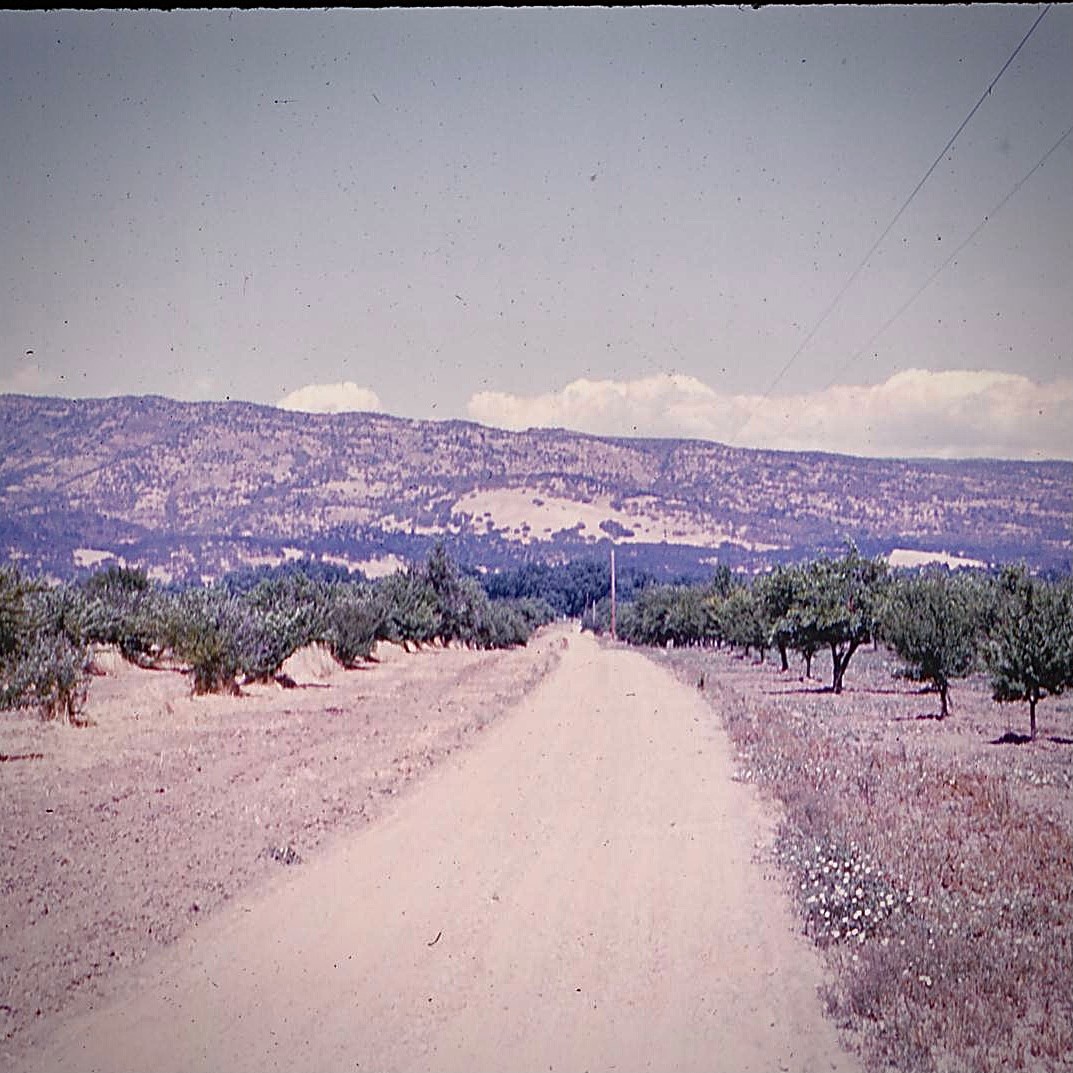
We grew all of our Cabernet Sauvignon upvalley back then, working with vineyards on Spring Mountain, and in St. Helena, Rutherford and Yountville. We still grow Cabernet Sauvignon upvalley, but have also expanded our varietals in Oak Knoll District to include Cabernet Sauvignon, Cabernet Franc and Syrah.
July is a special month for us each year, as July 1970 is when things started happening on the main estate. It was an exciting time for him, and all of us seven kids are grateful for his vision and foresight. Although Napa Valley has a winegrowing history dating back to the late 1800s, Prohibition really cut thhings off at the knees. Many of the terrific vineyards that were planted here in the valley were torn out, as winegrapes lost much of their value during Prohibition. Large swaths of Napa Valley were planted to what were more viable commercial crops at that time, largely figs, pruned and walnuts ... which is what our property was planted to in the late 1960s when our dad selected this site!
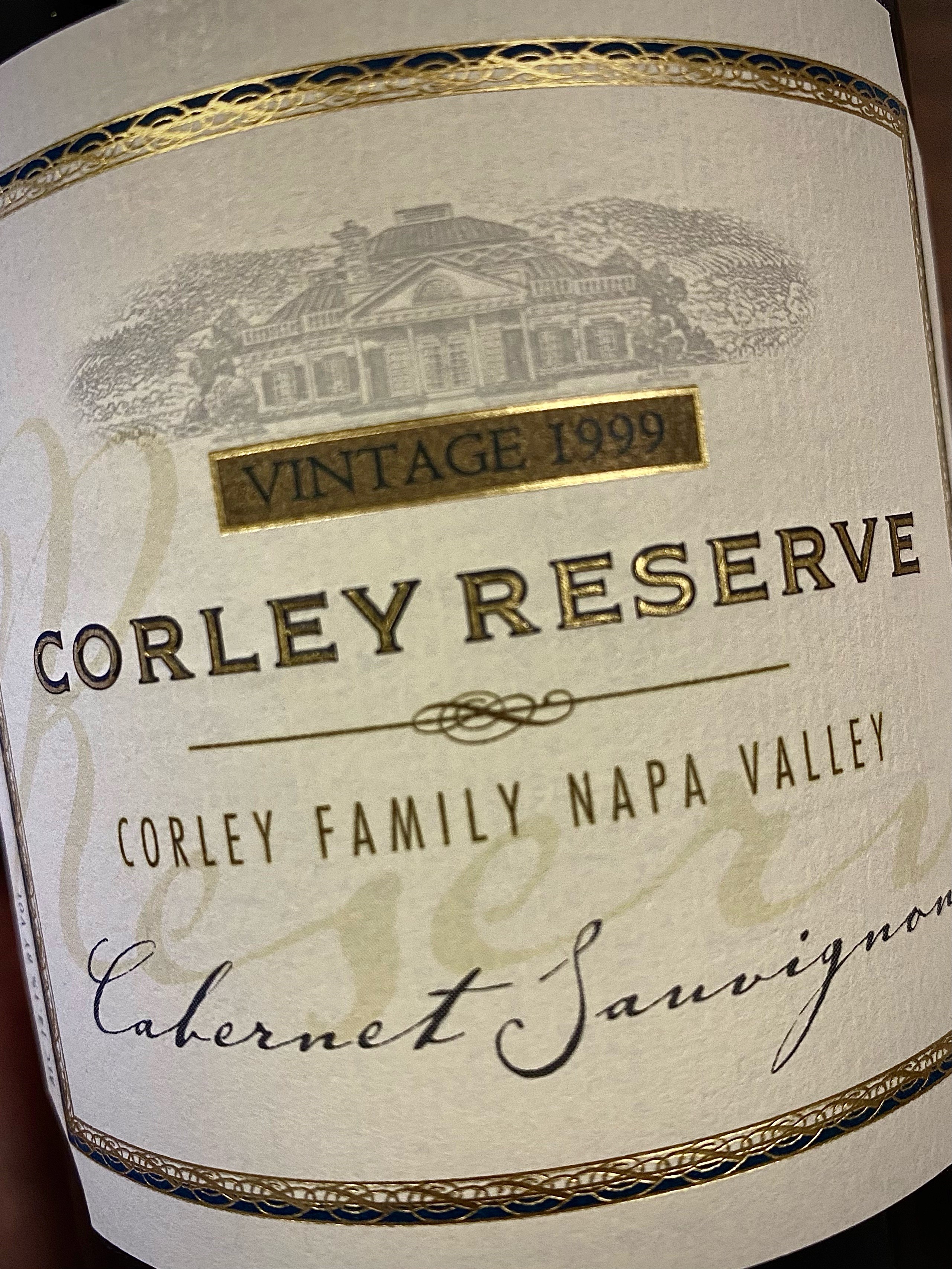
This July, we're celebrating our dad's vision and foresight by going back into The Library to pull out some gems. This week, we're enjoying the CORLEY Cabernet Sauvignon 'Reserve' 1999. This wine is a very personal favorite of mine. 1999 was my 10th year anniversary working full-time at the winery, and it was a great vintage. When the wine was released, I recall the tannins were a little rough around the edges, but we could see that the wine was so full on the midpalate, that it just needed some time to 'resolve the edges'. This wine was bottled in 2001, now at 20 years in the bottle, this wine is really in a wonderful space! The fruit is dark and ripe, with secondary and teritary layers coming in. The texture is smooth and the finish is long and lingering. I recommend decanting this wine for about 45 minutes to leave some slight sediments behind, and to give the wine an opportunity to open up.
We'll be raising a glass of 1999, and many others, to 'Dear Ole Dad' this month! Enjoy!
In[ter]dependence Day
In past years, I've posted the full text of The Declaration of Independence on July 4. For broader perspective, this year I'd like to also include an excerpt from freed slave Frederick Douglass' address to Congress on July 5, 1852. For context, Douglass' speech was given 26 years after the death of Thomas Jefferson (1826), and 9 years beofre the start of the American Civil War.
Declaration of Independence - Thomas Jefferson. July 4, 1776.
The unanimous Declaration of the thirteen united States of America, When in the Course of human events, it becomes necessary for one people to dissolve the political bands which have connected them with another, and to assume among the powers of the earth, the separate and equal station to which the Laws of Nature and of Nature's God entitle them, a decent respect to the opinions of mankind requires that they should declare the causes which impel them to the separation.
We hold these truths to be self-evident, that all men are created equal, that they are endowed by their Creator with certain unalienable Rights, that among these are Life, Liberty and the pursuit of Happiness.--That to secure these rights, Governments are instituted among Men, deriving their just powers from the consent of the governed, --That whenever any Form of Government becomes destructive of these ends, it is the Right of the People to alter or to abolish it, and to institute new Government, laying its foundation on such principles and organizing its powers in such form, as to them shall seem most likely to effect their Safety and Happiness. Prudence, indeed, will dictate that Governments long established should not be changed for light and transient causes; and accordingly all experience hath shewn, that mankind are more disposed to suffer, while evils are sufferable, than to right themselves by abolishing the forms to which they are accustomed. But when a long train of abuses and usurpations, pursuing invariably the same Object evinces a design to reduce them under absolute Despotism, it is their right, it is their duty, to throw off such Government, and to provide new Guards for their future security.--Such has been the patient sufferance of these Colonies; and such is now the necessity which constrains them to alter their former Systems of Government. The history of the present King of Great Britain is a history of repeated injuries and usurpations, all having in direct object the establishment of an absolute Tyranny over these States. To prove this, let Facts be submitted to a candid world.
He has refused his Assent to Laws, the most wholesome and necessary for the public good.
He has forbidden his Governors to pass Laws of immediate and pressing importance, unless suspended in their operation till his Assent should be obtained; and when so suspended, he has utterly neglected to attend to them.
He has refused to pass other Laws for the accommodation of large districts of people, unless those people would relinquish the right of Representation in the Legislature, a right inestimable to them and formidable to tyrants only.
He has called together legislative bodies at places unusual, uncomfortable, and distant from the depository of their public Records, for the sole purpose of fatiguing them into compliance with his measures.
He has dissolved Representative Houses repeatedly, for opposing with manly firmness his invasions on the rights of the people.
He has refused for a long time, after such dissolutions, to cause others to be elected; whereby the Legislative powers, incapable of Annihilation, have returned to the People at large for their exercise; the State remaining in the mean time exposed to all the dangers of invasion from without, and convulsions within.
He has endeavoured to prevent the population of these States; for that purpose obstructing the Laws for Naturalization of Foreigners; refusing to pass others to encourage their migrations hither, and raising the conditions of new Appropriations of Lands.
He has obstructed the Administration of Justice, by refusing his Assent to Laws for establishing Judiciary powers.
He has made Judges dependent on his Will alone, for the tenure of their offices, and the amount and payment of their salaries.
He has erected a multitude of New Offices, and sent hither swarms of Officers to harrass our people, and eat out their substance.
He has kept among us, in times of peace, Standing Armies without the Consent of our legislatures.
He has affected to render the Military independent of and superior to the Civil power.
He has combined with others to subject us to a jurisdiction foreign to our constitution, and unacknowledged by our laws; giving his Assent to their Acts of pretended Legislation:
For Quartering large bodies of armed troops among us:
For protecting them, by a mock Trial, from punishment for any Murders which they should commit on the Inhabitants of these States:
For cutting off our Trade with all parts of the world:
For imposing Taxes on us without our Consent:
For depriving us in many cases, of the benefits of Trial by Jury:
For transporting us beyond Seas to be tried for pretended offences
For abolishing the free System of English Laws in a neighbouring Province, establishing therein an Arbitrary government, and enlarging its Boundaries so as to render it at once an example and fit instrument for introducing the same absolute rule into these Colonies:
For taking away our Charters, abolishing our most valuable Laws, and altering fundamentally the Forms of our Governments:
For suspending our own Legislatures, and declaring themselves invested with power to legislate for us in all cases whatsoever.
He has abdicated Government here, by declaring us out of his Protection and waging War against us.
He has plundered our seas, ravaged our Coasts, burnt our towns, and destroyed the lives of our people.
He is at this time transporting large Armies of foreign Mercenaries to compleat the works of death, desolation and tyranny, already begun with circumstances of Cruelty & perfidy scarcely paralleled in the most barbarous ages, and totally unworthy the Head of a civilized nation.
He has constrained our fellow Citizens taken Captive on the high Seas to bear Arms against their Country, to become the executioners of their friends and Brethren, or to fall themselves by their Hands.
He has excited domestic insurrections amongst us, and has endeavoured to bring on the inhabitants of our frontiers, the merciless Indian Savages, whose known rule of warfare, is an undistinguished destruction of all ages, sexes and conditions.
In every stage of these Oppressions We have Petitioned for Redress in the most humble terms: Our repeated Petitions have been answered only by repeated injury. A Prince whose character is thus marked by every act which may define a Tyrant, is unfit to be the ruler of a free people.
Nor have We been wanting in attentions to our Brittish brethren. We have warned them from time to time of attempts by their legislature to extend an unwarrantable jurisdiction over us. We have reminded them of the circumstances of our emigration and settlement here. We have appealed to their native justice and magnanimity, and we have conjured them by the ties of our common kindred to disavow these usurpations, which, would inevitably interrupt our connections and correspondence. They too have been deaf to the voice of justice and of consanguinity. We must, therefore, acquiesce in the necessity, which denounces our Separation, and hold them, as we hold the rest of mankind, Enemies in War, in Peace Friends.
We, therefore, the Representatives of the united States of America, in General Congress, Assembled, appealing to the Supreme Judge of the world for the rectitude of our intentions, do, in the Name, and by Authority of the good People of these Colonies, solemnly publish and declare, That these United Colonies are, and of Right ought to be Free and Independent States; that they are Absolved from all Allegiance to the British Crown, and that all political connection between them and the State of Great Britain, is and ought to be totally dissolved; and that as Free and Independent States, they have full Power to levy War, conclude Peace, contract Alliances, establish Commerce, and to do all other Acts and Things which Independent States may of right do. And for the support of this Declaration, with a firm reliance on the protection of divine Providence, we mutually pledge to each other our Lives, our Fortunes and our sacred Honor.
What to the Slave is the Fourth of July? (An Excerpt) - Freed Slave Frederick Douglass' Speech to The President and Congress. July 5, 1852.
What, to the American slave, is your 4th of July? I answer: a day that reveals to him, more than all other days in the year, the gross injustice and cruelty to which he is the constant victim. To him, your celebration is a sham; your boasted liberty, an unholy license; your national greatness, swelling vanity; your sounds of rejoicing are empty and heartless; your denunciations of tyrants, brass fronted impudence; your shouts of liberty and equality, hollow mockery; your prayers and hymns, your sermons and thanksgivings, with all your religious parade, and solemnity, are, to him, mere bombast, fraud, deception, impiety, and hypocrisy — a thin veil to cover up crimes which would disgrace a nation of savages. There is not a nation on the earth guilty of practices, more shocking and bloody, than are the people of these United States, at this very hour.

